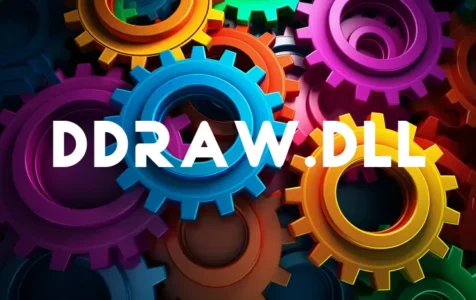Understanding DDRAW.DLL
The DDRAW.DLL file is associated with Microsoft DirectDraw, which is an essential component for running many applications, particularly games. DirectDraw is a part of the Microsoft DirectX API, which is a collection of APIs designed for handling tasks related to multimedia, especially game programming, and video on Microsoft platforms.
DirectDraw provides applications, particularly older ones, the ability to run either fullscreen or embedded in a window, similar to other Windows applications. Historically, this DLL was crucial for games and software that required direct access to the video hardware for fast 2D graphics rendering.
Common Issues with DDRAW.DLL
Problems with DDRAW.DLL may manifest in various ways. A user could encounter error messages like “ddraw.dll is missing,” “ddraw.dll not found,” or receive error codes such as “Error Code = 80070057”. These issues can occur for a range of reasons, which include but are not limited to:
– Deletion or misplacement of the DDRAW.DLL file.
– Corruption of the DDRAW.DLL file, which can be due to malicious software.
– Damage to the Windows registry from a recent software change (install or uninstall).
– Incompatibility with the version of DDRAW.DLL and the software trying to use it.
In other cases, specific programs or games may require that the DDRAW.DLL file is copied into the program’s installation folder, which is a deviation from the usual location within the system directories.
Expert Tip: For smoother PC performance, consider using a PC optimization tool. It handles junk files, incorrect settings, and harmful apps. Make sure it's right for your system, and always check the EULA and Privacy Policy.
Special offer. About Outbyte, uninstall instructions, EULA, Privacy Policy.
Is DDRAW.DLL safe?
The legitimate DDRAW.DLL file provided by Microsoft is entirely safe. However, DLL files can be imitated or infected by malware to disguise as legitimate system components. Therefore, downloading them from unverified sources can be risky. Users should always ensure they’re using trusted sources to resolve DLL-related issues and maintain up-to-date antivirus software to prevent and detect malicious activity.
Fixing Issues Associated with DDRAW.DLL
When facing problems with DDRAW.DLL, there are several steps that users can take:
Method 1: Restoring or Reinstalling the File
If DDRAW.DLL is missing or deleted, you might be able to restore it from the Recycle Bin. If not, you can try reinstalling the application that’s giving you issues, as this should restore the original DLL file in its correct location.
Method 2: Running a Virus Scan
Malware infections can corrupt DLL files, so running a comprehensive virus scan can identify and remove potential threats.
Method 3: System Update or Restore
Running Windows Update can sometimes fix DLL issues as updates often include patches for system files. Alternatively, if a recent change caused the problem, performing a system restore can revert your system state to a previous point where the issue was not present.
Method 4: Manually Downloading and Replacing the File
If none of the above methods work, and you’re sure about the integrity of the source, you can download the correct version of DDRAW.DLL and replace it manually. This involves downloading from a trusted repository and placing it in the system directory or the installation folder of the application.
Always remember to download files from official or reputable sources to avoid causing additional issues. Microsoft provides extensive resources and community support where you can seek further assistance as part of their user forums.
User Community Experiences
Community discussions can often provide insight into common issues faced by users and potential solutions. You may find threads on official forums like Microsoft’s community pages where users have encountered similar problems with DDRAW.DLL and shared their resolutions. These user experiences can be valuable, offering practical advice from a variety of perspectives.
If you’re experiencing issues with DDRAW.DLL or wish to learn more about potential fixes, you might consider visiting Microsoft’s official community forums for additional support. Here, you’ll find a wealth of information from both technical experts and fellow users who may have faced similar challenges.
